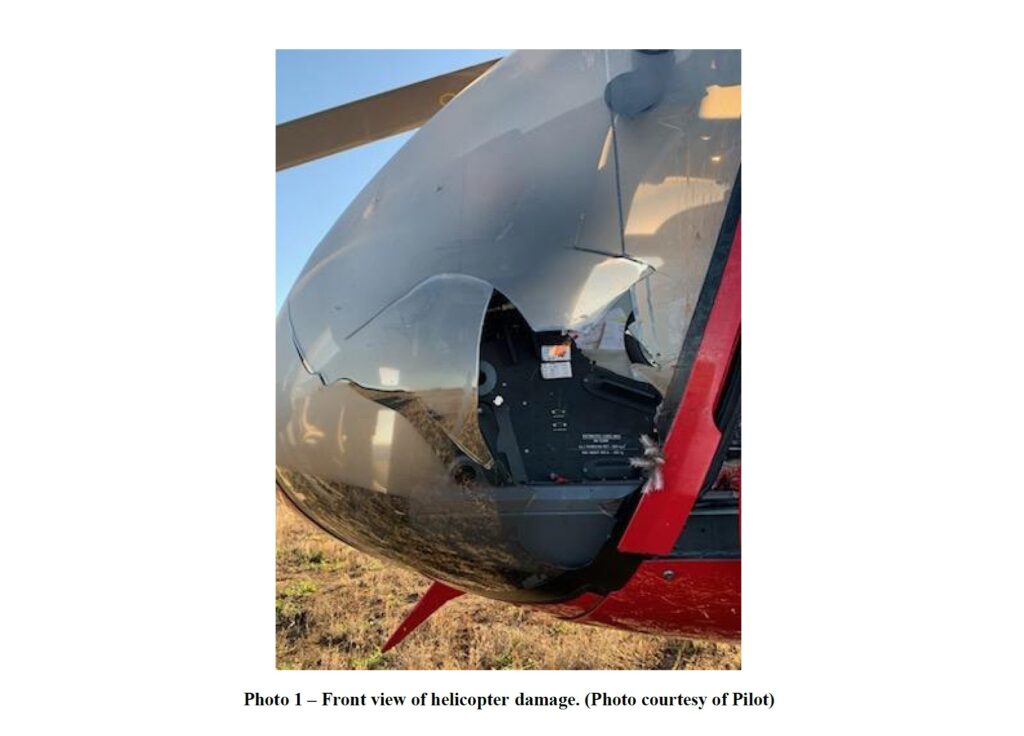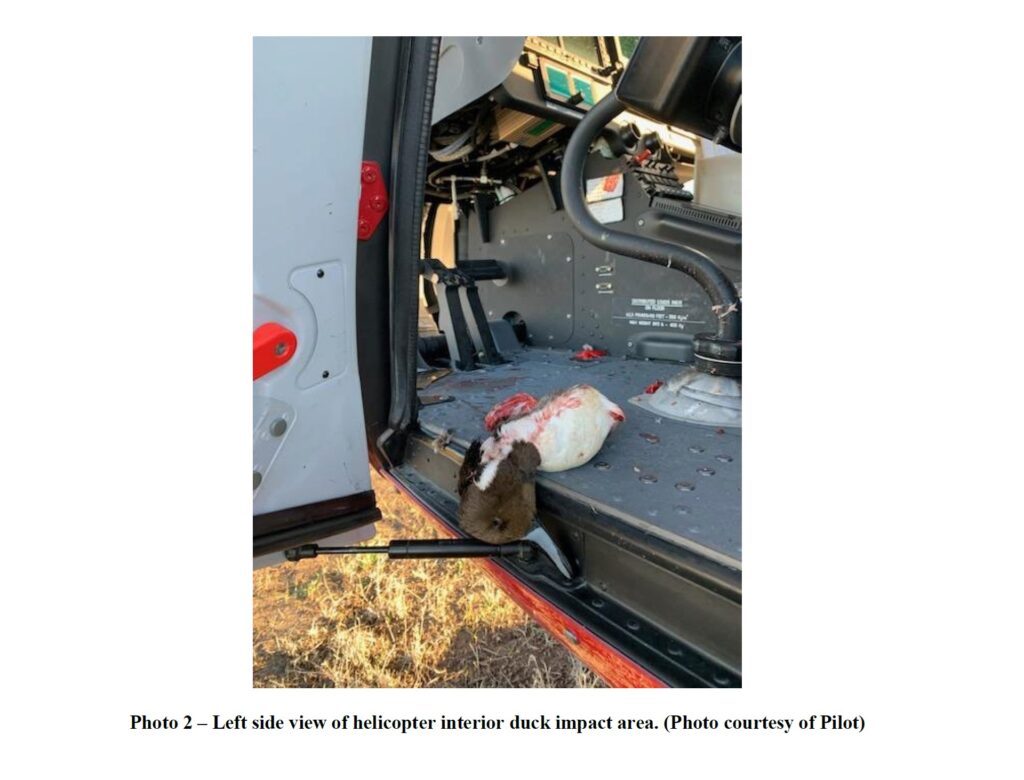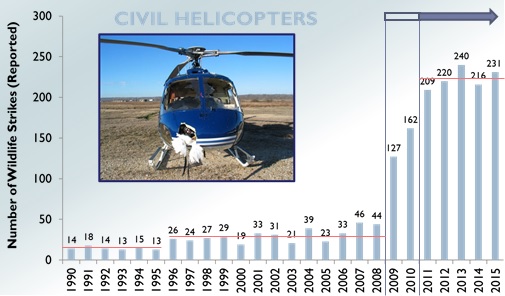Dusk Duck: Birdstrike During Air Ambulance Flight (Reach H130 N415RX)
On 12 December 2022 air ambulance Airbus H130 / EC130T2 N415RX of Reach Air Medical Services was damaged in a birdstrike north west of Yuba City, California.

According to the US National Transportation Safety Board (NTSB), who issued their safety investigation report uncharacteristically quickly on 9 February 2023:
The pilot in the helicopter reported that, during cruise flight [at 1,500 ft AGL] at dusk with night vision goggles on, he encountered a flock of birds at 1,500 ft above ground level.
As the pilot initiated a climbing left turn to avoid the birds, he heard a loud bang accompanied by a pain in his left leg. The helicopter then began to vibrate, and the pilot initiated a precautionary landing in a nearby field without further incident.
Bird remains were located throughout the pilot side of the cockpit. The helicopter sustained substantial damage to the windshield.
Fortuitously the bird struck low on the windscreen rather than at head height and only one bird of the flock struck the helicopter. Neither the pilot nor the two other occupants were injured.
Even though part of the bird was recovered, disappointingly the bird species and therefore its likely size, was not recorded by NTSB (other than a photo caption saying ‘duck’).

Safety Resources
EASA have issued Safety Information Bulletin SIB 2021-07 on Bird Strike Risk Mitigation in Rotorcraft Operations and accompanying safety promotion material.
In a presentation on behalf of the Rotorcraft Bird Strike Working Group (RBSWG) to the 11th EASA Rotorcraft Symposium in December 2017 it was revealed that in the US 94% of the current helicopter fleet is made up of types that never needed to meet a bird strike requirement. A helicopter accident (discussed below) and the Hudson A320 ditching, both in January 2009, were likely causes of a big increase in all wildlife strikes reporting across the US helicopter fleet. While fixed wing aircraft predominantly strike birds during take-off and landing, two thirds of rotorcraft strikes occurred during the en route phase (where kinetic energy is highest). Only 8-9% occurred during approach and 9-10% during climb. The presentation went on:
While fixed wing aircraft predominantly strike birds during take-off and landing, two thirds of rotorcraft strikes occurred during the en route phase (where kinetic energy is highest). Only 8-9% occurred during approach and 9-10% during climb. The presentation went on:
The largest single component struck by birds is the windshield with 47% on Part 27 and 40% on Part 29. 84-85% of all bird strikes occurred on components forward of the main rotor mast. This includes the main rotor which experienced 30%-33% of the strikes reported. Not one single record exists for windshield penetration on Part 29 rotorcraft certified to the FAA bird strike airworthiness standard established over 21 years ago. This is statistically significant. For newly manufactured and existing rotorcraft, the RBSWG proposed to use a Risk-Based Safety-Tiered approach that scales the bird strike regulation based on the maximum number of occupants onboard. As the number of occupants increases, so does the risk exposure.
They also recommend:
- Reduce airspeed when practical
- Increase altitude as quickly as possible and practical
- Use taxi and landing lights
They also say:
The location of bird concentrations during seasonal migrations and the local bird nesting and roosting habitats, should be made available to the rotorcraft operator/pilot for preflight planning to minimize the potential for bird strikes. Air carriers and general aviation operators working with the Flight Safety Programs and Flight Service Briefing should identify and publish the known locations and probability of bird concentrations. This information on bird concentrations should be incorporated into alert bulletins, flight service notice to airmen (NOTAM) and other systems presently used to inform flight crews of flight hazards.
The European Safety Promotion Network Rotorcraft (ESPN-R) has a helicopter safety discussion group on LinkedIn. You may also find these Aerossurance articles of interest:
- Safety Lessons from a Fatal Helicopter Bird Strike
- USAF HH-60G Downed by Geese in Norfolk, 7 January 2014
- Deadly Dusk Air Ambulance Bird Strike
- AW169 Birdstrike with a Turkey Vulture
- Swedish Military NOE Helicopter Bird Strike
- AS350B3/H125 Bird Strike with Red Kite
- Power of Prediction: Foresight and Flocking Birds looks at how a double engine loss due to striking Canada Geese had been predicted 8 years before the US Airways Flight 1549 ditching in the Hudson.
- Final Report Issued on 2008 B737 Bird Strike Accident in Rome
- NTSB Recommendations on JT15D Failure to Meet Certification Bird Strike Requirements
- USAF T-38C Downed by Bird Strike
- Big Bustard Busts Blade: Propeller Blade Failure After Bird Strike
- Don’t Be a Sucker!: Cabri Canopy Implosion

Recent Comments